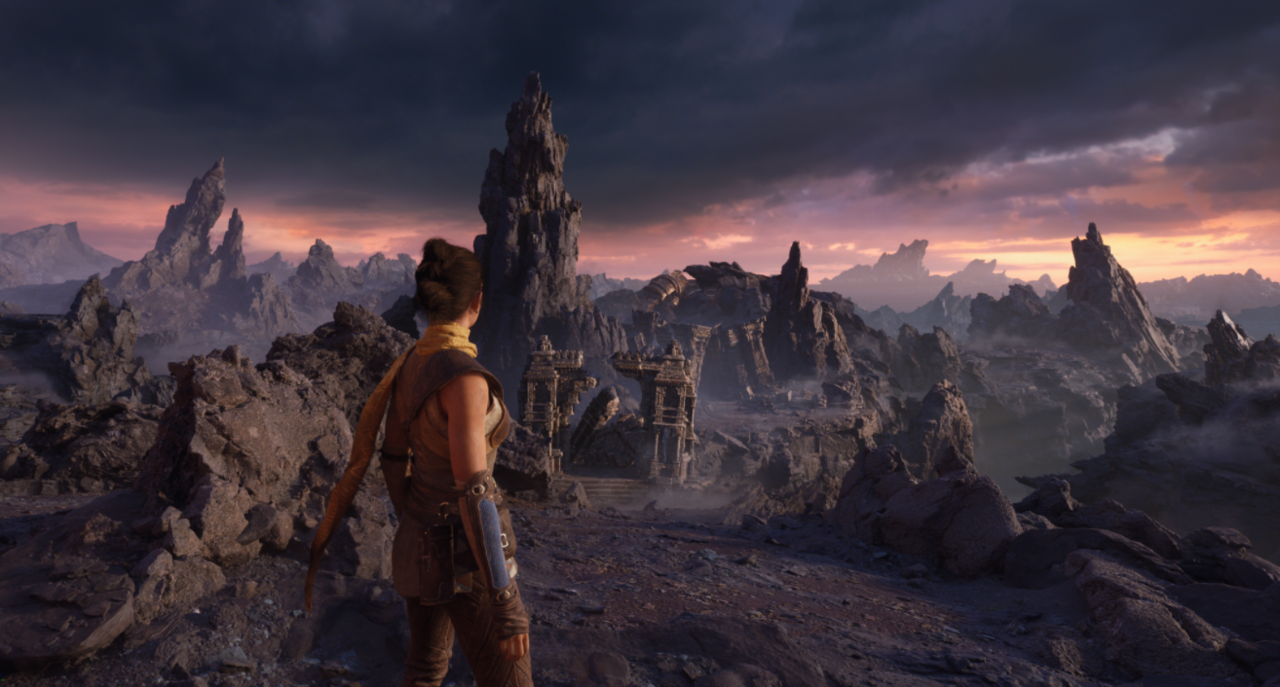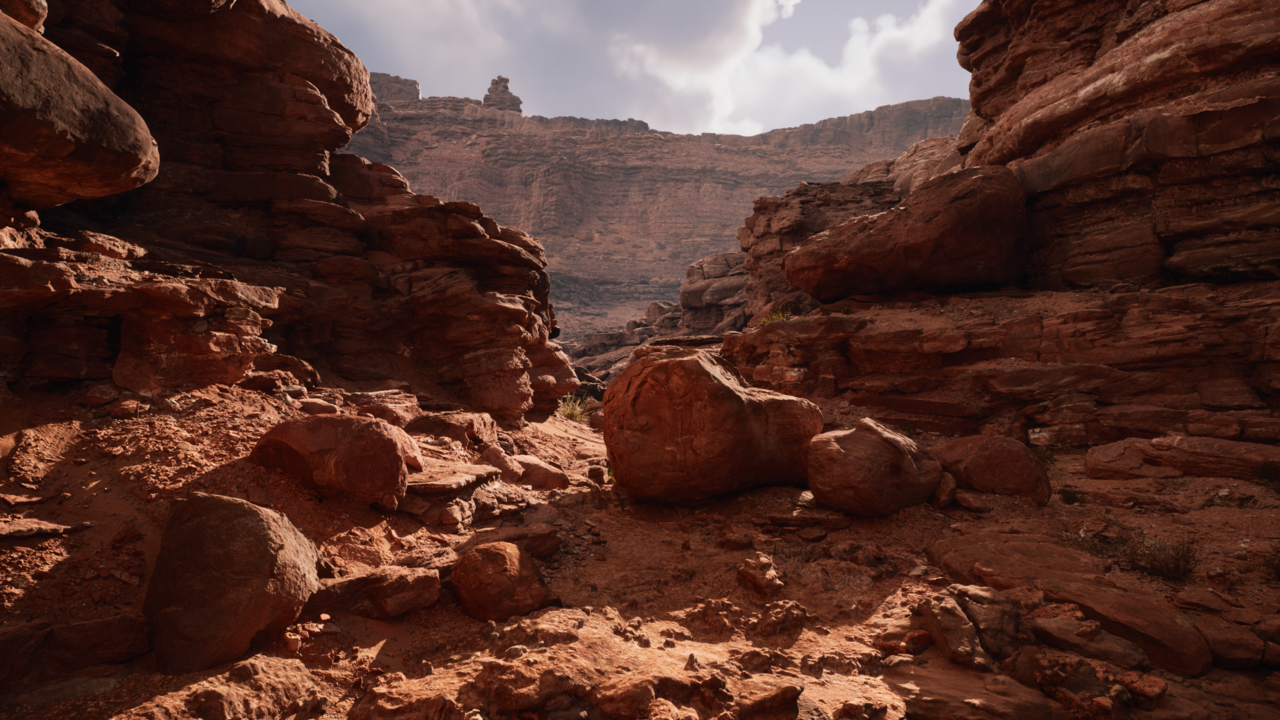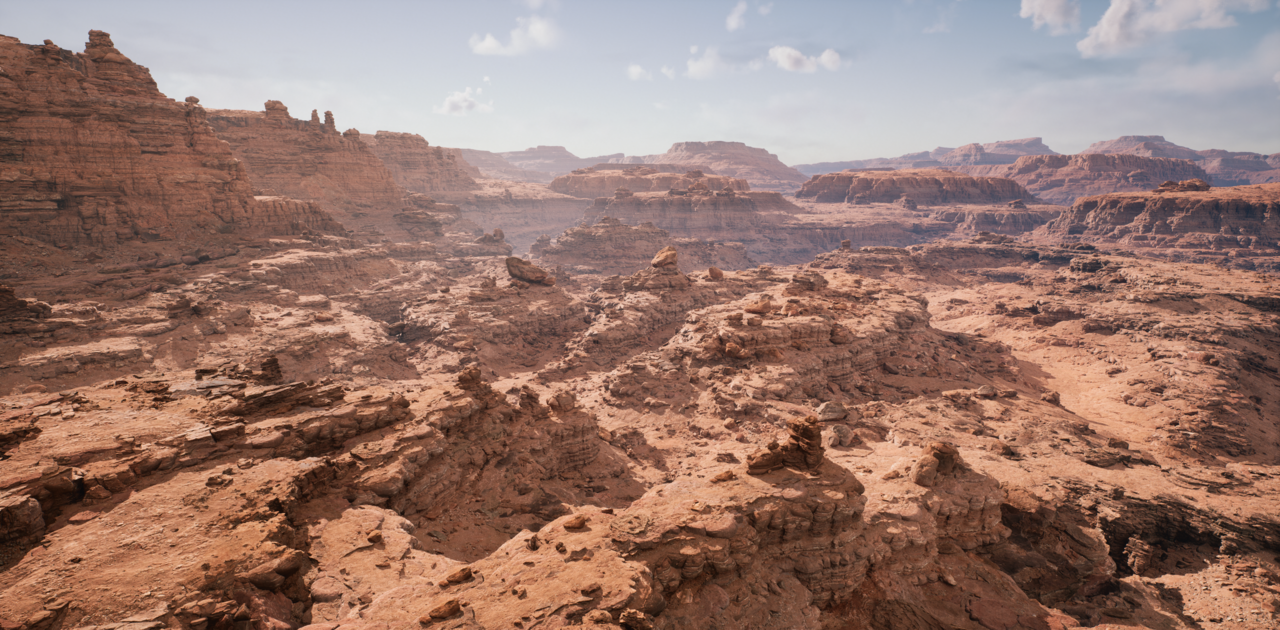Unreal Engine 5 Gets Stunning Demo With Incredible Graphics, Enters Early Access
Epic shows off Unreal Engine 5 in even more depth and detail.
It's a big day for Epic's Unreal Engine, as the Fortnite studio announced on Wednesday that Unreal Engine 5 is now available in early access for game developers ahead of its public release in early 2022. Not only that, but Epic also released a stunning new tech demo showing off the new engine and its capabilities, and it's very, very impressive.
The Valley of the Ancient tech demo shows off new features like Nanite and Lumen that promise to provide a "generational leap" in visual fidelity. The video also covers some of the new systems for developers, such as World Partition, which breaks big game worlds down into chunks so developers can streamline their processes and work more efficiently. Additionally, Unreal Engine 5 now has Quixel built in, so developers can more quickly and easily incorporate photorealistic items and objects into games.

There are only a handful of games so far that have been announced for Unreal Engine 5, and one of them is Epic's own Fortnite. The studio said today that it continues to work on the Unreal Engine 5 transition for the game, but it's not quite ready yet.
"As always, we're committed to battle-testing the engine in-house, as we prepare to ship Fortnite on UE5 across all platforms down the line," Epic said.
Unreal Engine 5 should be ready in "early" 2022 for all developers, Epic said, though of course developers may also choose to stay with Unreal Engine 4. As for the early access version, it's meant to give studios a first look at the technology, with additional features and further enhancements coming for the full 5.0 release next year.
Valley of the Ancient
The Valley of the Ancient demo is free for developers to download and tinker with as a sample project to help familiarize themselves with the new tools.
"Valley of the Ancient is a rich and practical example of how the new features included with Unreal Engine 5 early access can be used, and is the result of our internal stress-testing," Epic said.

Developers are free to modify the project and tailor it to their liking. Like the previous tech demo, Lumen in the Land of Nanite, Valley of the Ancient is not a real game that Epic plans to sell or offer down the road; instead, it's a showcase of the new engine and its capabilities.
Here is a look at the new Valley of the Ancient showcase and more:
What's New In Unreal Engine 5
Epic also provided a rundown of the core pillars of what's new in Unreal Engine 5. You can see the full text at the bottom of the page, but two of the biggest pieces are Nanite and Lumen. Nanite is a "virtualized micropolygon system" that allows developers to import "film-quality" assets with "millions" of polygons directly into the game.
"Nanite intelligently streams and processes only the detail you can perceive, largely removing poly count and draw call constraints, and eliminating time-consuming tasks such as baking details to normal maps and manually authoring LODs--freeing you up to concentrate on creativity," Epic said.
Lumen, meanwhile, is described as a "fully dynamic global illumination solution" that features advancements to Unreal Engine 4's lighting systems to make light look and react more realistically. "With Lumen, indirect lighting adapts on the fly to changes to direct lighting or geometry, such as changing the sun's angle with the time of day, turning on a flashlight, or opening an exterior door," Epic said.
Also, Lumen does away with the need to author lightmaps or wait for them to bake--which Epic says could often take many hours.

This is just a sampling of what's new in Unreal Engine 5--check out the full rundown of details written by Epic below to learn more.
Epic's engineering VP Nick Penwarden tells GameSpot that the overarching idea and purpose of Unreal Engine 5 is to give developers even more power and control. Developers should also expect a more streamlined experience with Unreal Engine 5.
"We're really looking at a combination of where the new technology that we've been able to build can help to create new, better, and more streamlined workflows," Penwarden said. "So with Nanite, the ability to ingest high-polygon models directly rather than needing to go and build custom [level of details] for that purpose or with Lumen not having to go pre-bake [global illumination] and create lightmap UVs and go through an overnight baking process, but rather being able to dynamically light your scene. I think the World Partition and UI redesign all have that common thread of how do we streamline and make the developing experience better across the board."
The new World Partition feature could be a big deal as well, Penwarden says, because it will allow developers to edit their maps as if they are a single unit.
"The idea of being able to edit the world as if it's just one big map rather than having to subdivide it up manually into sub-levels for the purposes of editing or streaming content," he said.

Epic's Unreal Engine is also used to help make the Disney show Star Wars: The Mandalorian, and specifically to create virtual sets. Penwarden says the advancements coming with Unreal Engine 5 should help improve workflows for those tools, too.
"I don't know that I can talk specifically about that show but I can say all of the tools and technology we're building now, it will be in UE5 and it will take the virtual production workflows that we've built in UE4 and make sure they're working in UE5 as well," he said. "So basically all of these technologies will come together with the full release of UE5 to power virtual production workflows, and technology like real-time high-quality global illumination, as well as being able to import film-quality assets directly, I think is going to have a huge impact on virtual production workflows and the workflow and their ability to iterate on set."
GameSpot will bring you more from our conversation with Penwarden and senior technology designer Chance Ivey in the days ahead, so keep checking back for more.
Unreal Engine 5 New Features And Systems
Descriptions written by Epic Games
Nanite
Our new Nanite virtualized micropolygon system lets users create games with massive, unprecedented amounts of geometric detail. Directly import film-quality source assets comprised of millions of polygons and place them millions of times, all while maintaining a real-time frame rate, and without any noticeable loss of fidelity. Nanite intelligently streams and processes only the detail you can perceive, largely removing poly count and draw call constraints, and eliminating time-consuming tasks such as baking details to normal maps and manually authoring LODs--freeing you up to concentrate on creativity.
Lumen
Lumen is a fully dynamic global illumination solution that lets users create dynamic, believable scenes. With Lumen, indirect lighting adapts on the fly to changes to direct lighting or geometry, such as changing the sun’s angle with the time of day, turning on a flashlight, or opening an exterior door. This means you no longer have to author lightmap UVs, wait for lightmaps to bake, or place reflection captures--you can simply create and edit lights inside the Unreal Editor and see the same final lighting as when the game is run on console.

Open Worlds
One of our goals is to make the creation of open worlds faster, easier, and more collaborative for teams of all sizes. The new World Partition system in Unreal Engine 5 changes how levels are managed and streamed, automatically dividing the world into a grid and streaming the necessary cells. Team members can also simultaneously work on the same region of the same World without stepping on each other’s toes via the new One File Per Actor system. Data Layers allow you to create different variations of the same World—such as daytime and nighttime versions—as layers that exist in the same space.
Animation
Author incredibly detailed characters in dynamic, real-time environments with Unreal Engine 5's powerful animation toolset. Working in context, you can iterate faster and more accurately, without the need for time-consuming round-tripping. Artist-friendly tools like Control Rig let you quickly create rigs and share them across multiple characters; pose them in Sequencer and save and apply the poses with the new Pose Browser; and easily create natural movement with the new Full-Body IK solver. And with Motion Warping, you can dynamically adjust a character’s root motion to align to different targets with a single animation.
MetaSounds
Unreal Engine 5 introduces a fundamentally new way of making audio, with MetaSounds, a high-performance system that offers complete control over audio DSP graph generation of sound sources, letting users manage all aspects of audio rendering to drive next-generation procedural audio experiences. MetaSounds is analogous to a fully programmable material and rendering pipeline, bringing all the benefits of procedural content creation to audio that the Material Editor brings to shaders: dynamic data-driven assets, the ability to map game parameters to sound playback, huge workflow improvements, and much more.
Editor Workflow
The revamped Unreal Editor provides an updated visual style, streamlined workflows, and optimized use of screen real estate, making it easier, faster, and more pleasing to use. To free up more space for viewport interactions, we’ve added the ability to easily summon and stow the Content Browser and to dock any editor tab to the collapsible sidebar. You can now quickly access frequently used properties in the Details panel with a new favoriting system, while the new Create button on the main toolbar lets you easily place Actors into your world.
MetaHumans
Want to populate your Unreal Engine 5 worlds? MetaHumans created in MetaHuman Creator are compatible with both UE4 and UE5. Sign up for MetaHuman Creator Early Access to begin importing your own MetaHumans, or simply download any of over 50 premade digital humans from Quixel Bridge.
Got a news tip or want to contact us directly? Email news@gamespot.com






Join the conversation